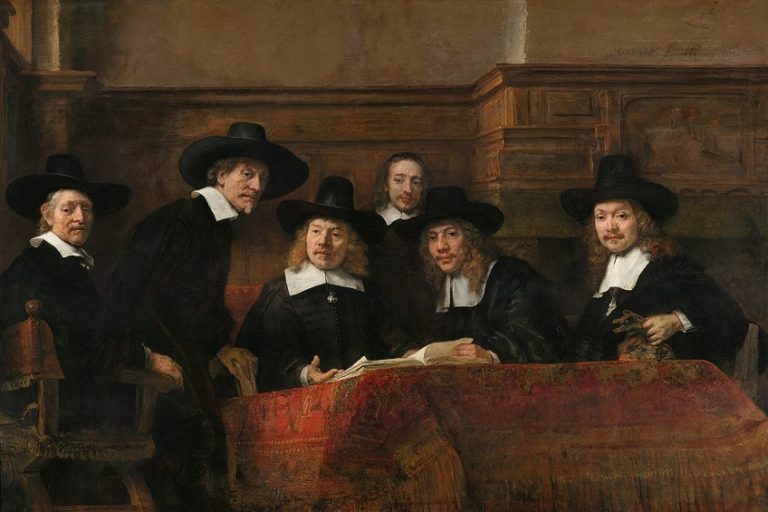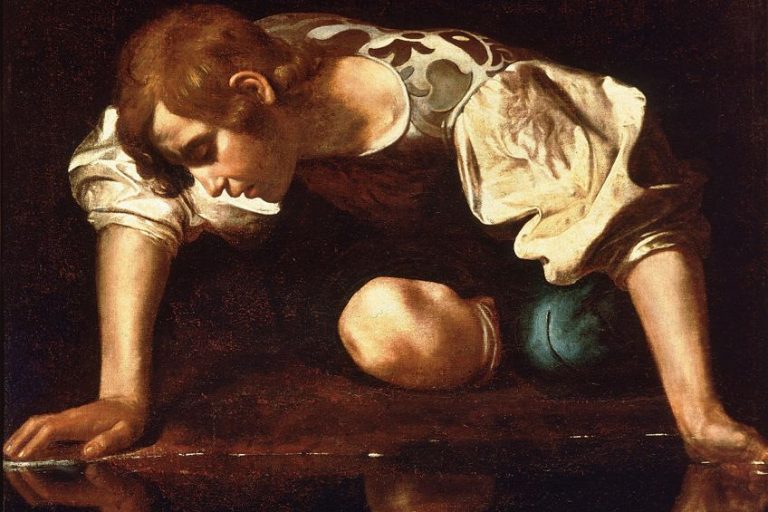“The Rape of the Daughters of Leucippus” by Peter Paul Rubens
The Rape of the Daughters of Leucippus, painted by Peter Paul Rubens around 1618, stands as a quintessential example of the Baroque era’s dynamic energy and dramatic intensity. This monumental work captures the mythological abduction of Leucippus’s daughters, Phoebe and Hilaeira, by the twin brothers Castor and Pollux. Rubens masterfully employs his trademark use of vivid color, robust figures, and vigorous movement to convey the tumultuous scene, highlighting the tension between the sensual beauty of the daughters and the aggressive force of the abductors. Through this painting, Rubens not only showcases his unparalleled skill in depicting the human form but also delves into the complexities of mythological narrative and emotional expression.
Key Takeaways
- The painting represents a mythological scene interpreted with the dynamic style characteristic of Rubens’ work.
- Peter Paul Rubens’ artistry is demonstrated through his vibrant depiction of motion and human form in a classical context.
- The Rape of the Daughters of Leucippus is recognized as a masterpiece with both historical and artistic value, preserved at the Alte Pinakothek in Munich.
Historical Context
| Artist | Peter Paul Rubens (1577 – 1640) |
| Date Created | c. 1618 |
| Medium | Oil on canvas |
| Genre | Mythological |
| Period/Movement | Baroque |
| Dimensions (cm) | 224 x 209 |
| Series/Versions | Single artwork |
| Where Is It Housed? | Alte Pinakothek, Munich, Germany |
| What It Is Worth | Considered priceless due to its historical and cultural significance; insured value estimated in the hundreds of millions of dollars |
The Rape of the Daughters of Leucippus is a significant Baroque painting completed around 1618 by the renowned artist Peter Paul Rubens, in collaboration with Jan Wildens. The painting depicts the mythical abduction of the daughters of Leucippus, Hilaeira and Phoebe, by the twins Castor and Pollux, known collectively as the Dioscuri. Rubens’ mastery of dynamic composition and his vigorous depiction of the human form are evident in this work, making it a striking example of his prowess in portraying motion and emotion.

The artwork is not only a display of Rubens’ artistic skill but also a reflection of the themes and tastes of the Baroque period, including a fascination with dramatic narrative and classical mythology. Its residence at the Alte Pinakothek in Munich attests to its enduring legacy and its status as a masterpiece of European art.
The painting continues to be discussed for its historical significance, artistic technique, and representation of cultural narratives in the early 17th century.
Leucippus’ Mythology
The painting draws its subject from the ancient Greek myth of the abduction of the daughters of Leucippus, Phoebe and Hilaeira. These siblings were betrothed to the twin brothers Lynceus and Idas but were forcibly taken by the Dioscuri, Castor and Pollux, who were also twins. It represents a distinct narrative combining elements of romance, drama, and divine intervention.

Peter Paul Rubens, a master of Baroque art, is known for his dynamic compositions and vibrant use of color. In this particular work, Rubens captures the physicality and emotion of the moment in the abduction of the daughters of Leucippus. His portrayal is full of movement, tension, and contrasts that articulate the dramatic event—and is a prime example of his skill in translating mythological narratives to canvas. The subject and Rubens’ interpretation reflect broader themes in Baroque art, such as power, tension, and theatricality.
The painting not only serves as a representation of a specific mythological event but also as a showcase of the artist’s skill in composition and ability to evoke emotion.
Artistic Analysis
This section deciphers the technical prowess of Peter Paul Rubens in The Rape of the Daughters of Leucippus, focusing on his painting technique, composition, use of color and texture, as well as the symbolism within the artwork.

Rubens’ Painting Technique
Rubens is renowned for his mastery in handling oil paints. His artwork displays a fluidity that stems from a confident application of oil paint with vigorous and expressive brushwork. The brush strokes are most apparent in the rendering of skin and drapery, giving the figures a sensuous and tactile quality.
This is characteristic of his style.

Composition and Iconography
The composition of The Rape of the Daughters of Leucippus is dynamic, created through diagonal movement and muscular figures that convey a sense of action. The painting depicts the abduction of Hilaeira and Phoebe by the Dioscuri, employing a triangular structure that guides the viewer’s gaze across the canvas.
The iconography is rooted in mythology, with Castor and Pollux, the Dioscuri, representing strength and divine intervention.

Use of Color and Texture
The use of color in the artwork is robust and vivid, with a palette that enhances the drama of the scene. Rubens’ oil painting technique allows for rich variations in texture, as seen in the contrast between the soft flesh of the figures and the rich, heavy fabric of their garments.
This textural contrast amplifies the artwork’s physicality and the tension of the narrative.

Use of Movement
Rubens masterfully employs movement to convey the chaotic and dramatic nature of the mythological abduction. The figures are arranged in a dynamic composition, with the twisting and turning bodies of the daughters, Phoebe and Hilaeira, creating a sense of struggle and urgency. Rubens’ fluid brushstrokes and the strategic placement of limbs and drapery enhance the impression of motion, as Castor and Pollux forcefully seize the women. The use of diagonal lines and overlapping forms further amplifies the sense of action, guiding the viewer’s eye across the canvas in a vigorous dance of tension and power.
This vivid portrayal of movement not only captures the physicality of the scene but also underscores the emotional intensity and dramatic flair that defines Rubens’ Baroque style.

Symbolism of the Artwork
Symbolism in The Rape of the Daughters of Leucippus is deeply interwoven with mythological themes. The artwork offers a visual interpretation of power, divinity, and human emotion, reflecting the cultural and societal structures of the time.
The struggle depicted not only embodies physical conflict but also alludes to the divine right of the gods and the fate of mortals.

Conservation and Exhibition
The Rape of the Daughters of Leucippus by Peter Paul Rubens is a celebrated oil painting renowned for its historical significance and artistic merit. Ensuring its preservation and reaching audiences through exhibitions are crucial aspects of its enduring legacy. Art conservators have employed meticulous techniques to preserve the integrity of Rubens’ masterpiece over the centuries. Being an oil on canvas, the painting is susceptible to environmental factors that could degrade its materials.
Conservation efforts often involve restorative measures to clean, repair, and stabilize the canvas, ensuring the longevity of the artwork.
Display and Ownership
Ownership of the painting has changed hands over the years before finding a home in museums that facilitate public viewing. Such museums provide a controlled environment ideal for display, balancing public access with conservation needs. This masterpiece, once housed at the Philadelphia Museum of Art, has been part of various exhibitions. While prints of the painting may be available for purchase in different mediums like acrylic prints, satin reproductions, or poster paper, these serve to broaden the artwork’s reach and are separate from the conservation and exhibition of the original canvas.

Modern Reception and Reproduction
The The Rape of the Daughters of Leucippus by Peter Paul Rubens continues to be celebrated through high-quality reproductions and commercial availability that cater to art aficionados and collectors alike. Prints of Rubens’ masterpiece are available in various sizes, often featuring a white border to allow for framing preferences. Reproduction on canvas is a popular choice, echoing the original texture and depth. Pine wood stretchers are commonly used to mount canvas prints, ensuring longevity and a professional look.
Not limited to prints, tapestries reproducing the artwork offer an alternative form of display, creating a compelling presence in any space.
Commercial Availability
Businesses dealing in art reproductions typically provide a wide range of options for The Rape of the Daughters of Leucippus, making it accessible for purchase online. A standard warranty is often included, covering any potential defects or issues. Shipping options are clearly outlined, with deliveries usually dispatched within a fixed number of business days. This availability ensures that admirers of Rubens’ work can conveniently secure a piece of this iconic artwork for their personal or office spaces.

The Rape of the Daughters of Leucippus by Peter Paul Rubens epitomizes the artist’s ability to fuse mythological narrative with the dramatic flair characteristic of the Baroque period. Through his dynamic composition, vigorous brushwork, and rich color palette, Rubens not only captures the violent abduction with palpable intensity but also invites viewers to reflect on the interplay of power, beauty, and emotion. This masterpiece remains a testament to Rubens’ genius in bringing classical myths to life, affirming his enduring influence on the trajectory of Western art.
Frequently Asked Questions
What Is the Historical Context Behind The Rape of the Daughters of Leucippus?
The Rape of the Daughters of Leucippus is a depiction of an episode from Greek mythology where the mortal twins Castor and Pollux, collectively known as the Dioscuri, abduct the daughters of Leucippus, Phoebe and Hilaeira, who were betrothed to their cousins. This mythological theme afforded Rubens an opportunity to explore dynamic figures and complex interactions in his compositions.
How Does Peter Paul Rubens Convey Motion and Emotion in The Rape of the Daughters of Leucippus?
Rubens masterfully creates a sense of movement through swirling draperies and the dynamic poses of the figures, with muscular torsos twisting and limbs stretching. He also captures intense emotion through the facial expressions and the physical tension between the characters, showcasing fear, determination, and resistance.
What Artistic Techniques Did Rubens Employ in The Rape of the Daughters of Leucippus?
Rubens used oil painting techniques to achieve rich coloration and textures. His meticulous brushwork, precise in detailing and soft in flesh tones, compliments the dramatic lighting, which highlights the figures and adds to the visual impact. Additionally, Rubens was renowned for his skillful use of chiaroscuro to enhance three-dimensionality and the kinetic energy of the scene.
How Does The Rape of the Daughters of Leucippus Reflect the Baroque Style?
The painting is representative of the Baroque era, characterized by dramatic imagery, strong contrasts of light and shadow, and a sense of movement. Rubens’s composition with its sense of drama, emotion, and the theatrical poses of figures encapsulates the grandeur and dynamic spirit typical of Baroque art.
Isabella studied at the University of Cape Town in South Africa and graduated with a Bachelor of Arts majoring in English Literature & Language and Psychology. Throughout her undergraduate years, she took Art History as an additional subject and absolutely loved it. Building on from her art history knowledge that began in high school, art has always been a particular area of fascination for her. From learning about artworks previously unknown to her, or sharpening her existing understanding of specific works, the ability to continue learning within this interesting sphere excites her greatly.
Her focal points of interest in art history encompass profiling specific artists and art movements, as it is these areas where she is able to really dig deep into the rich narrative of the art world. Additionally, she particularly enjoys exploring the different artistic styles of the 20th century, as well as the important impact that female artists have had on the development of art history.
Learn more about Isabella Meyer and the Art in Context Team.
Cite this Article
Isabella, Meyer, ““The Rape of the Daughters of Leucippus” by Peter Paul Rubens.” Art in Context. June 4, 2024. URL: https://artincontext.org/the-rape-of-the-daughters-of-leucippus-by-peter-paul-rubens/
Meyer, I. (2024, 4 June). “The Rape of the Daughters of Leucippus” by Peter Paul Rubens. Art in Context. https://artincontext.org/the-rape-of-the-daughters-of-leucippus-by-peter-paul-rubens/
Meyer, Isabella. ““The Rape of the Daughters of Leucippus” by Peter Paul Rubens.” Art in Context, June 4, 2024. https://artincontext.org/the-rape-of-the-daughters-of-leucippus-by-peter-paul-rubens/.











